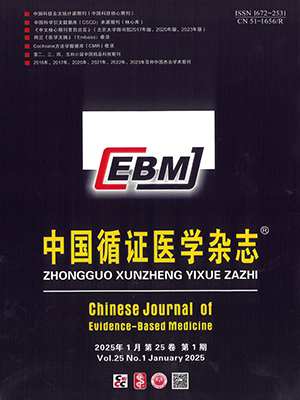Objective To collect evidence of treatment for the patients with ocular myasthenia gravis.
Methods We searched The Cochrane Library (Issue 1, 2010), PubMed (1966 to April, 2010), CNKI (1979 to April, 2010) and VIP (1989 to April 2010) to identify systematic reviews, randomized controlled trials, controlled clinical trials and prospective avaicohort studies about efficacy and safety of treatment for ocular myasthenia gravis.
Results We identified 2 guidelines, 5 systematic reviews and 4 observational studies on inhibitor of acetylcholinesterase, immunosuppressive agents, intravenous immunoglobulin, corticosteroids, and thymectomy for ocular myasthenia gravis. The first choice for ocular myasthenia gravis was inhibitor of acetylcholinesterase. When the symptom could not be remitted, the corticosteroids should be considered. Immunosuppressive agents might be added if the effect of corticosteroids was not good. Plasma exchange was not recommended. Thymectomy should be performed if the patients suffered from thymoma.
Conclusion The best clinical evidence can be available by the evidence-based method.
Citation: ZHONG Jie,WU Bo. Clinical Evidence of Treatment for Ocular Myasthenia Gravis. Chinese Journal of Evidence-Based Medicine, 2010, 10(6): 763-765. doi: 10.7507/1672-2531.20100490 Copy
Copyright © the editorial department of Chinese Journal of Evidence-Based Medicine of West China Medical Publisher. All rights reserved
-
Previous Article
Evidence-Based Treatment for a Smoker with Periimplantitis -
Next Article
Evidence-Based Treatment for a Patient with Primary Dysmenorrhea




